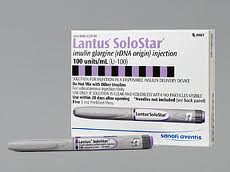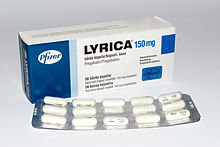One defense from small drugmakers that have bought older products and hiked their prices: Their drugs are used by a small number of patients, so the higher cost isn't much of a hit to the healthcare system. The slow-but-steady price increases on blockbuster meds are a bigger problem, they say.
Upset about Horizon Pharma's ($HZNP) 500%-plus price hike on the combo pain med Vimovo, which simply marries the old painkiller naproxen with the old stomach med esomeprazole? Take a look at repeated price increases on Sanofi's ($SNY) diabetes med Lantus, Pfizer's ($PFE) pain drug Lyrica or Novartis' ($NVS) leukemia fighter Gleevec instead.
Or so the theory goes.
Now, a new report from the Center for Medicare and Medicaid Services puts some numbers to that claim. They won't resolve the debate over which price increases are "justified," but they do highlight some commonly used meds whose sales growth--and Medicare spending--depends more on rising prices than on rising demand.
Take Vimovo. CMS tags that price hike at 543% for 2014, according to the online report, the biggest increase among the 120 drugs CMS highlighted. And that pricing boost helped send spending on the drug up past $38 million from just over $7 million in 2013. The number of patients using the drug only grew by 8%.
Or Valeant Pharmaceuticals' ($VRX) skin drug Targretin, used by lymphoma patients. Valeant bought the drug in 2013 and promptly raised the price. For CMS, the drug's unit cost rose by 123% last year, to $145.65, and Medicare spent almost $89,000 per user on the drug. Overall, CMS shelled out $73.5 million, more than double its 2013 spending, with an increase in patients of just 12%.
 Those are the small drugs with very hefty price hikes. Move a bit farther down the ranking of increased unit costs and you'll find Lantus and Lantus Solostar, Sanofi's blockbuster insulin med packaged in vials and a pen injector, respectively. Both formats cost CMS a lot more last year than the year before--41% more per unit for Lantus and 27% more for the Solostar pen packaging.
Those are the small drugs with very hefty price hikes. Move a bit farther down the ranking of increased unit costs and you'll find Lantus and Lantus Solostar, Sanofi's blockbuster insulin med packaged in vials and a pen injector, respectively. Both formats cost CMS a lot more last year than the year before--41% more per unit for Lantus and 27% more for the Solostar pen packaging.
Dollarwise, CMS laid out $1.725 billion for Lantus last year, a $400 million increase year-over-year despite a 6% decline in patient count. CMS spent another $2.02 billion for Lantus Solostar, an increase of almost $700 million, or about 50% year-over-year. Solostar's patient growth amounted to 13%.
Novartis price increases on Gleevec sent CMS' unit costs up by 21% last year, to $179.93--and that pushed spending per user to $69,212. The number of patients using the drug ticked upward by 5%, but in all, CMS spending on the drug grew by 28%, to almost $1 billion.
Pfizer's Lyrica also went up in price, by about 20% according to CMS, to $4.28 per pill. Medicare spent $1.4 billion on the drug in 2014, up from just over $1 billion in 2013. The number of patients grew by 7%.
Obviously, these smaller price increases on bigger-selling drugs yielded more, dollarwise, than Horizon or Valeant's triple-digit hikes. But look at CMS' numbers over the past 5 years, and the differences grow even more. Before the two smaller companies bought those meds and jacked up their prices, Vimovo and Targretin's costs held more or less steady. Not so with the Big Pharma blockbusters. (It should be noted that these three are far from the only examples; Bristol-Myers Squibb ($BMY) and Otsuka's Abilify, AbbVie's ($ABBV) Humira, Amgen's ($AMGN) Enbrel, Roche's ($RHHBY) Activase and more have seen prices rise by double digits year by year since 2010.)
Since 2010, Lantus' unit cost has leapt by 120%, to $21.51 from $9.79. The number of patients using the vial form actually declined by one-tenth--Sanofi wanted to move them over to the pen-injector version--but spending on the drug more than doubled, to $1.72 billion from $843 million.
Meanwhile, Lantus Solostar's per-unit price grew by 76%, to $21.74. Patient numbers almost tripled--a big score for Sanofi's marketing efforts--but spending grew by more than sixfold, to $2.02 billion from just $334.7 million. Together, the two Lantus products brought in $3.74 billion from Medicare last year, up from about $1.2 billion.
Novartis' work on Gleevec was similar. Patient numbers grew by 36% from 2010 to 2014 while the price almost doubled, to $179.93 from $92.74. Medicare's outlay almost tripled, to $995 million from $386 million.
 And the same could be said for Pfizer and Lyrica, which grew much more popular with patients--a 40% increase in Medicare users from 2010 to 2014--while prices increased even more. At $4.28 per pill in 2014, Lyrica cost 76% more than it did in 2010 ($2.42). Spending on the drug almost tripled--to $1.4 billion from $515.8 million.
And the same could be said for Pfizer and Lyrica, which grew much more popular with patients--a 40% increase in Medicare users from 2010 to 2014--while prices increased even more. At $4.28 per pill in 2014, Lyrica cost 76% more than it did in 2010 ($2.42). Spending on the drug almost tripled--to $1.4 billion from $515.8 million.
When Sanofi, Pfizer and Novartis were raising their prices on these blockbuster meds, they were fighting to fill patent-cliff sales gaps and scrambling to refill their pipelines of prospective new drugs. They were also spending billions on R&D--and on stock buybacks, dividends and other shareholder-friendly moves. Horizon and Valeant, by contrast, aren't big R&D spenders; Valeant, at least, has defended its price hikes as necessary to deliver returns to shareholders.
- see the CMS blog post
- check out the spending report
Special Reports: 10 big brands keep pumping out big bucks, with a little help from price hikes | The top 10 most expensive drugs of 2013